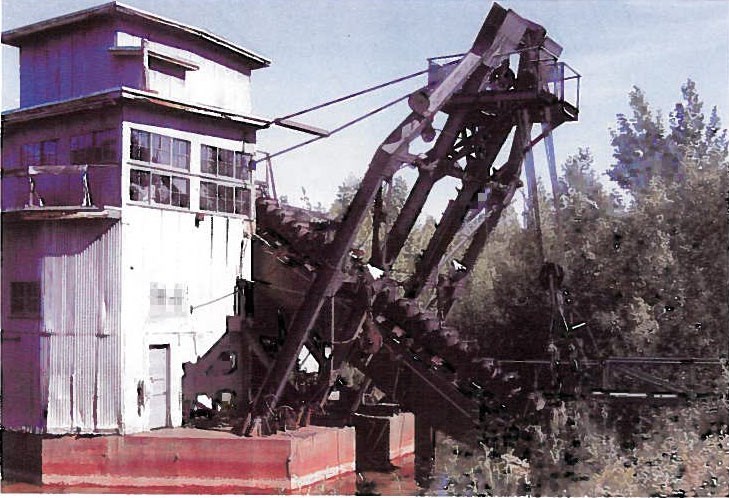Part of a series of articles titled The Legacy of ANILCA.
Article
GOLD!
By Doug Beckstead

National Park Service photograph by Doug Beckstead
Gold mining is an important part of the cultural and natural history of national parks in Alaska. When establishing Yukon-Charley Rivers National Preserve, Congress included the region's gold mining history as one of the reasons for protecting it as a national preserve.
Early exploration and gold discoveries in the vicinity of Yukon-Charley Rivers predate those made in the Klondike by a decade or more. The lands now in the preserve were witness to the thousands of men and women traveling up and down the Yukon River as they rushed from Fortymile to Circle to the Klondike, and then on to Nome. Some among these argonauts saw enough potential in the rocks and streams on Coal Creek, Woodchopper Creek, Fourth of July Creek, and Ben and Sam creeks to return to these tributaries along the Yukon after failing to find claims elsewhere.
Prospectors staked the first claims on Coal Creek and Woodchopper Creek in 1901. Over the next three-and-a-half decades, 410 claims were staked and restaked on the two creeks. The early miners utilized pans, picks, shovels, and sluice boxes in their quest to extract the gold. Some sank shafts down through the permafrost 20, 30, and 40 feet down to bedrock where they dug tunnels through the permanently frozen ground so narrow that the miners had to crawl on their bellies to work with the light of a single candle providing the only illumination.
Not much remains from the early miners on the two creeks because a dredge later worked in the same valley, and as a result early camps and mines were destroyed. However, there are still several small cabins located on the smaller tributaries of Coal Creek and Woodchopper Creek that enable visitors to picture the lives of early miners who toiled on the creeks.
In 1934, General AD. McRae, businessman examined the claims on Coal Creek and purchased options on them. That same year, McRae along with several other investors, including Ernest Patty from the Alaska Agricultural College and School of Mines (who later became the third president of the University of Alaska), established Gold Placers Incorporated and began developing plans to work a bucket line dredge on the creek. The new dredge began production on July 1, 1936. It operated in conjunction with its sister dredge on Woodchopper Creek, with several short gaps in production, until 1957 when the operations were consolidated onto Woodchopper Creek. During the two decades the dredge operated on Coal Creek. it recovered over 92,000 ounces of gold with a value, at the time, of more than $3.2 million. In the late 1930s, Gold Placers Inc. at Coal and Woodchopper creeks was the third largest producer of gold in Alaska. behind the companies at Nome and Fairbanks. Several companies tried mining Woodchopper Creek between 1960-1977 but none was as efficient as Gold Placers Inc.
When the dredge last worked in 1977. the operators "shut it down and walked away'' at the end of the season. Today it sits in its pond as a silent reminder of the glory days of mining in Yukon-Charley Rivers National Preserve.
Last updated: October 23, 2021
